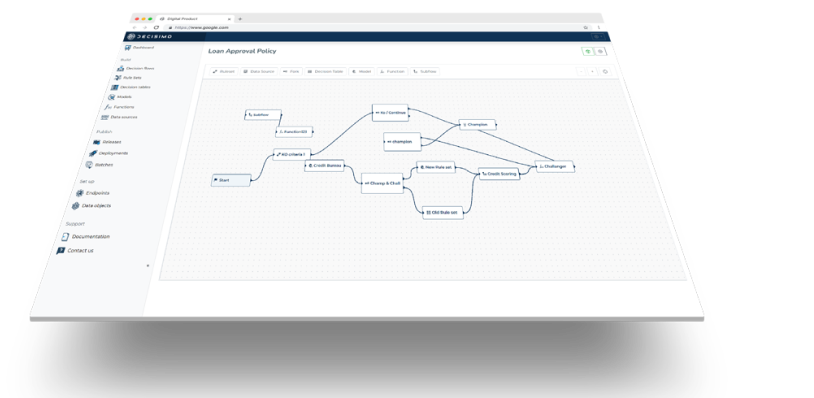The Importance of Case Management in Anti-Fraud Efforts - Decisimo - Decision Intelligence Services
Published on: 2024-08-10 18:29:56
Effective fraud detection and prevention is essential for protecting businesses and organizations from financial loss and damage to their reputation. A case management tool is an important tool for managing and investigating fraud cases, and can provide a range of benefits for organizations.
A case management tool in antifraud should be designed to support the entire investigation process, from initial detection of potential fraud to the resolution of the case. It should provide a centralized location for storing and organizing all relevant information and evidence, as well as allowing for collaboration among investigators.
Main Functionalities
- Case tracking and organization: A case management tool should have the ability to track and organize cases in an efficient manner, allowing users to easily access and manage their cases.
- Data integration and analysis: A case management tool should be able to integrate and analyze data from multiple sources, such as transaction records and customer information, to identify potential fraud.
- Collaboration and communication: A case management tool should provide tools for collaboration and communication, allowing team members to work together and share information effectively.
- Evidence management: A case management tool should have the ability to manage and organize evidence, such as documents and records, in a secure and accessible manner.
- Case resolution and reporting: A case management tool should provide tools for resolving cases and generating reports, allowing users to efficiently close cases and provide the necessary information to stakeholders.
Repetitive Tasks in Antifraud Case Management
Another key feature of a case management tool in antifraud should be the ability to automate repetitive tasks and processes. This could include features such as automated alerts for potential fraud, as well as the ability to set up and run complex queries and analysis.
- Generating and sending alerts for suspicious transactions or activity.
- Running regular checks for potential fraud using pre-defined rules or algorithms.
- Identifying and flagging duplicate or related cases for further investigation.
- Monitoring and tracking the status of ongoing cases, including updates and actions taken.
One way to achieve this automation is by integrating a rule engine into the case management tool. A rule engine can be used to define a set of rules and decision logic that can be applied to specific cases and data sets. This can help to automate decision-making tasks, freeing up investigators to focus on more complex and high-value activities. By providing these capabilities, a case management tool can help to improve the efficiency and effectiveness of antifraud investigations, while also providing valuable insights and evidence that can be used in cooperation with law enforcement.
Evidence management and case resolution
A case management tool can provide tools for managing and organizing evidence, such as documents and records. This can help to ensure that important evidence is preserved and can be used in future investigations. Additionally, it can provide tools for case resolution and reporting, allowing users to efficiently close cases and provide necessary information to stakeholders.
The examples of evidence that a tool should be able to provide for a case:
- A clear timeline of events and actions taken in the case.
- Detailed records of communication and interactions with relevant parties.
- Documentation of any relevant financial transactions.
- Evidence of any potential fraudulent activities or red flags.
- Information on the parties involved in the case, including their contact details and any relevant background information.
- Results of any investigations or analysis performed in the course of the case.
- Reports and summaries of the case, including any recommendations for further action.
Conclusion
In conclusion, a case management tool in antifraud is an essential tool for managing and investigating fraud cases. It should provide a range of features and capabilities, including case tracking and organization, data integration and analysis, collaboration and communication, and evidence management. Additionally, it should be able to automate repetitive tasks and processes, and provide tools for case resolution and reporting. By providing these capabilities, a case management tool can help organizations improve the efficiency and effectiveness of their antifraud efforts, and provide valuable evidence for cooperation with law enforcement.


